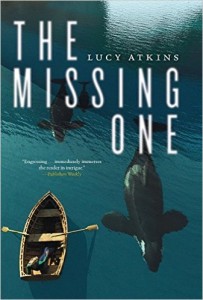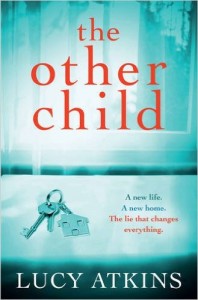How To Create Tension
It’s all a bit tense…
 You might think of tension in a novel as being obvious ‘edge of your seat action’: the FBI agent running down the rabid serial killer, the guy dangling by his fingernails off a window ledge. In fact, all great novels are powered by tension of some kind or another. It might be a quiet and internal tension (my favourite example of this is the pivotal scene in Jane Austen’s Persuasion, where Wentworth slips Anne a confessional love note).
You might think of tension in a novel as being obvious ‘edge of your seat action’: the FBI agent running down the rabid serial killer, the guy dangling by his fingernails off a window ledge. In fact, all great novels are powered by tension of some kind or another. It might be a quiet and internal tension (my favourite example of this is the pivotal scene in Jane Austen’s Persuasion, where Wentworth slips Anne a confessional love note).
Or it could be a general tide of emotional escalation (think of Jane Eyre, which has both a sense of menace and an unfolding love story). A good book must have a strong narrative that pulls the reader along. To make this happen, you have to understand tension and how to ramp it up. Tension, in short, is a magic ingredient in any writer’s storecupboard.
So how do you do it?
Well, probably the first step is to work out what your book is actually about. This might sound obvious, but it’s surprising how many people can’t describe, in a nutshell, what the central tension in their novel actually is. If you don’t know what your book is really about, then how can you develop and nurture the tension to draw the reader along?
One way to pin down this central tension is to do a simple little exercise: the ‘elevator pitch’. Imagine you’re in an elevator (we’re in LA, here) with a bunch of Hollywood film producers and you have less than a minute to get them hooked on your novel. How do you do this? You get them interested in the central tension. You can’t waffle. You have to focus on what’s really compelling.
Once you’ve worked out what your central tension is, you can then find ways to nurture and develop it. The plot is one obvious place to start, if you want to ramp up the tension in your book. Some kind of threat works wonders. It doesn’t have to be ‘the axe murderer is coming down the path’. It could be something as simple as the appearance of an ex-girlfriend or some carefully placed hints that a home is not as happy as it might seem.
 Another way to generate tension is to think about the emotional stakes, and possibly raise them. In the first draft of my first novel, The Missing One, my main character, Kal, was pregnant. I thought this was quite a tense situation. Nobody wanted poor Kal to lose the baby. But it wasn’t enough, my agent said, I needed to ‘up the emotional stakes’. So, I redrafted, adding a child, a cute toddler, called Finn. With Finn’s life at stake, my agent immediately sold the book to a publisher.
Another way to generate tension is to think about the emotional stakes, and possibly raise them. In the first draft of my first novel, The Missing One, my main character, Kal, was pregnant. I thought this was quite a tense situation. Nobody wanted poor Kal to lose the baby. But it wasn’t enough, my agent said, I needed to ‘up the emotional stakes’. So, I redrafted, adding a child, a cute toddler, called Finn. With Finn’s life at stake, my agent immediately sold the book to a publisher.
Your reader needs to buy into this escalating tension, to really feel it. Throwing in a bit of time pressure can be helpful. If Flash Gordon had several years to save the universe, we’d all have lost interest. But the clock was ticking…So, think about urgency (emotional or practical) – what makes it urgent? What’s the pressure?
You might also add a few obstacles here. Again, these can be emotional (think about Pride & Prejudice, where they come largely from the characters’ internal worlds). Or they can be more obvious: in The Other Child, my second novel, my main character, Tess, is driving, frantically, from Boston to New Hampshire at night in search of her 8 year old son. She has to stop to breastfeed her screaming baby…
There are lots ways to destroy tension too of course. One particularly heinous flaw is the clumsy back story. As a new writer, particularly, there’s a big temptation to spend your first few chapters filling the reader in on who your characters are (‘Mary was an only child, she went to school in Belfast…’). I learned about this when I handed my first novel to my agent. She loved it, she said, but I should cut the first three chapters.
 Cut them? I’d worked on those chapters for months. They were word perfect. But no, she said, they slowed the story down and added almost nothing. They were simply me ‘writing my way into the story’. I deleted them, and the book came alive.
Cut them? I’d worked on those chapters for months. They were word perfect. But no, she said, they slowed the story down and added almost nothing. They were simply me ‘writing my way into the story’. I deleted them, and the book came alive.
Instead of dumping your character’s backstory on the reader in one go, try using it to generate more tension. Withholding facts works well because it makes your reader curious. Hints, allusions, partial memories, question marks are the best friends of tension.
Finally, if you want your reader really gripped, the most basic rule of all still applies: ‘show don’t tell’. If you tell your reader that Sophie is feeling anxious, the tension immediately dribbles away. But if Sophie is jerking her knee, fiddling with her cigarette case, sweating lightly with a pounding heart then your reader is there with her: inhabiting Sophie’s body, feeling what she’s feeling.
Tension, in other words, is not something that only certain ‘genres’ need to care about. Whether you’re writing a gripping crime novel or crafting a delicate work of literary fiction, make it your friend and the readers will follow.
—
Lucy Atkins is the author of The Missing One, and The Other Child (both published by Quercus).
Twitter: @lucyatkins
Facebook: Lucy Atkins author.
Category: Contemporary Women Writers, How To and Tips
Comments (4)
Trackback URL | Comments RSS Feed
Sites That Link to this Post
- Best No-Nonsense Novel Writing Tips, Part IV: Masterful Plot | Lauren Faulkenberry | January 7, 2018
- Underground Book Reviews – 5 Tips for Creating Masterful Plot | September 5, 2016

























Definitely good advice. Your point about knowing what the book is about it spot on. The first reader of my first published novel pointed out, after reading the first draft, that “not much really happens. Your characters just sit around and talk a lot.” I didn’t want to hear it, but it was good feedback, and I’ve been mindful of tension ever since.
In my books, I can drop in some tension by just adding a fight scene. 🙂 However, I use other kinds of tension as well.
It’s that pesky elevator pitch that is the challenge! Took me three drafts (one major rewrite and a zillion little tinkering moves) before I “got into” what my story was really about. Thanks for sharing what your agent told you and how you successfully upped your tension. Seeing real-world examples sheds light. Great post and thanks for sharing!